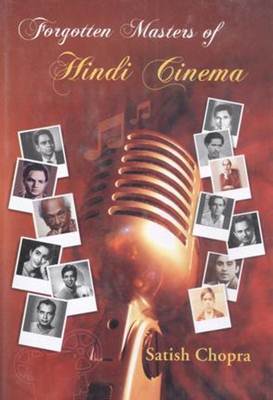Defined by timelessness
By S. Ravi
The Hindu May 21, 2015
Satish Chopra
Hindi cinema
A collection of essays by Satish Chopra accompanied by some rare pictures gives a peek into Hindi cinema’s golden era.
The Indian cinema has been our primary source of entertainment for the past 100 years. And its past continues to enthral many of those who appreciate its golden age spanning fron 1940 to 1965. TV channels and radio stations have a slot dedicated to this period covering its various aspects. Among hundreds of thousands fans of that golden era is Satish Chopra, a retired banker, on whom the magic of the yesteryear melodies had a lifelong impact. This has resulted in “Forgotten Masters of Hindi Cinema” (LG Publishers Distributors) –– a book comprising informative essays on K.L. Saigal, Pankaj Mullick, Anil Biswas, Khemchand Prakash, Husnalal Bhagatram, Kidar Sharma, Naushad, Sajjad Hussain, Shyam Sunder, Roshan and Shailendra. Besides these, there is one on actor Nutan in “Bandini”, three versions of the film “Devdas”, child prodigy Master Madan and of Saigal’s favourite song “Babul Mora.” “My objective and inspiration was to keep the memories of these greats, who provided me immense solace and left an indelible imprint, alive and intact. Moreover, I wanted to share this feeling with others,” says Chopra.
The write-ups are suffused with interesting and revealing anecdotes. “These bring to fore the human and other sterling aspects of these personalities,” adds the writer. Saigal’s large-heartedness is revealed throughhis decision of not singing Punjabi songs after two because Sham Chaurasi, a Punjabi singer remarked that now that the former had started singing in the language others will starve to death. Anil Biswas had introduced and brought a large number of singers into limelight –– 74 as per records, including Talat Mahmood and Mukesh. He had prevailed upon Dilip Kumar, Ashok Kumar and persuaded Kishore Kumar to sing a duet “Aa mohabbat ki basti basayeinge hum” with Lata Mangeshkar in “Fareb”.
Equally delightful is the discoverythat Husnalal was a violinist, who performed at Harballah Music Festival and won appreciation from Ustad Bade Ghulam Ali Khan. Likewise how despite “Neki Aur Badi” (1949) failing, Kidar Sharma reposed faith in Roshan and gave him “Bawre Nain” (1950) which was a great success, even though a well-known distributor had offered the former a huge sum for replacing the latter by Husnalal Bhagatram.
Chopra also narrates some poignant stories like how Sajjad Hussain and Shyam Sunder went into oblivion despite their tremendous talent and having composed some memorable songs, including those sung by Noorjehan. The book reflects the tiring and exhaustive research on the part of the author. “I had been gathering these details and facts over 35 years and met the living relatives, friends and family members of these artistes and journalists who met them, besides reading books, news reports and articles. I also met Kidar Sharma and Naushad.”
The rare photographs — Saigal in the recording studio, Mehruun Nisa, wife of Anil Biswas, a group shot of greats including, C. Ramchandra, Anil Biswas, Naushad, Lata Mangeshkar, Madan Mohan, Jaikishan, Roshan, Hemant Kumar and Ghulam Mohammad, Anil Biswas cooking with Lata Mangeshkar and Meena Kapoor looking on — give fascinating insight into the history of Hindi cinema music.


